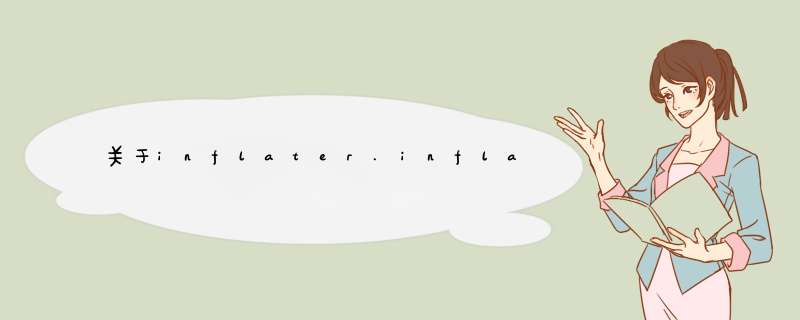
我正在研究这个链接的片段:http://developer.android.com/guide/components/fragments.html
有一段代码给出:
public static class ExampleFragment extends Fragment {@OverrIDepublic VIEw onCreateVIEw(LayoutInflater inflater, VIEwGroup container, Bundle savedInstanceState) { // Inflate the layout for this fragment return inflater.inflate(R.layout.example_fragment, container, false);}}
我对attachToRoot参数感到困惑,所以我查看了Stack Overflow的一些帮助,并找到了类似问题的好答案.所以我理解的是,如果将其设置为true,则片段将附加到活动的根布局,并从那里派生其布局框架.如果它是假的,它将简单地返回膨胀布局的根,并且像片段的独立视图(从传入的容器中导出布局参数).
现在我在上面的例子中关于attachToRoot的文档中进一步阅读:
A boolean indicating whether the inflated layout should be attached to
the VIEwGroup (the second parameter) during inflation. (In this case,
this is false because the system is already inserting the inflated
layout into the container—passing true would create a redundant vIEw
group in the final layout.)
我没有得到最后一个括号语句,它说它应该是假的,因为我们已经将布局插入到容器中.在没有attachToRoot为真的情况下,我们已经插入容器是什么意思?如果参数为true,则最终布局如何具有冗余视图组.详细说明这一部分的一个例子将是一个很大的帮助.谢谢.
解决方法:
我通常不回答我自己的问题,但在对此进行了一些研究之后,我想也许这会对其他人有所帮助.尽管marcin的回答是正确的,但我只是在详细回答一下.
根据代码:
@OverrIDepublic VIEw onCreateVIEw(LayoutInflater inflater, VIEwGroup container, Bundle savedInstanceState) { // Inflate the layout for this fragment return inflater.inflate(R.layout.example_fragment, container, false);}第二个参数容器是一个带有ID fragment_container的framelayout,活动用它来将片段添加到它的布局中.
现在,如果我们深入了解LayoutInflater类的inflate方法,这就是代码(我只是突出显示代码的相关部分而不是整个部分):
// The vIEw that would be returned from this method.VIEw result = root;// Temp is the root vIEw that was found in the xml. final VIEw temp = createVIEwFromTag(root, name, attrs, false);首先,它从提供的根创建临时视图.
如果attachToRoot为true,则执行以下 *** 作:
if (root != null && attachToRoot) { root.addVIEw(temp, params);}它将上面创建的临时视图添加到根视图(即容器).
如果attachToRoot为false,则执行以下 *** 作:
if (root == null || !attachToRoot) { result = temp; }很明显,如果attachToRoot为true,它只是返回root(fragment_container,即ID活动用于将片段放入其中.)在向其添加临时视图后(在本例中为example_fragment中的Root视图)).
如果attachToRoot为false,它只返回片段的xml的根,即容器参数仅用于获取片段根视图的layoutParams(因为它没有root,所以它需要来自某处的params).
在上面的示例中出现了true的问题,因为返回值是root(具有添加的视图临时的fragment_container,默认情况下fragment_container已经具有父级).现在,如果您尝试执行片段事务,则尝试添加子视图fragment_container(已将父项添加到另一个xml(您定义的用于添加片段的framelayout).
因此,AndroID会抛出以下异常:
if (child.getParent() != null) { throw new IllegalStateException("The specifIEd child already has a parent. " + "You must call removeVIEw() on the child's parent first."); }将其设置为true并返回时出现的问题是返回的视图已经具有父级,因此不能在其他位置使用.换句话说,您可以在onCreateVIEw(可能是linearLayout)中创建一个单独的视图组,将参数设置为true,然后返回视图.然后它将正常工作,因为视图组将没有现有的父级.
这是我对上述问题的理解,我可能错了,在这种情况下,我希望任何AndroID专家都能纠正这个问题.
总结以上是内存溢出为你收集整理的关于inflater.inflate Android文档的困惑全部内容,希望文章能够帮你解决关于inflater.inflate Android文档的困惑所遇到的程序开发问题。
如果觉得内存溢出网站内容还不错,欢迎将内存溢出网站推荐给程序员好友。
欢迎分享,转载请注明来源:内存溢出

 微信扫一扫
微信扫一扫
 支付宝扫一扫
支付宝扫一扫
评论列表(0条)